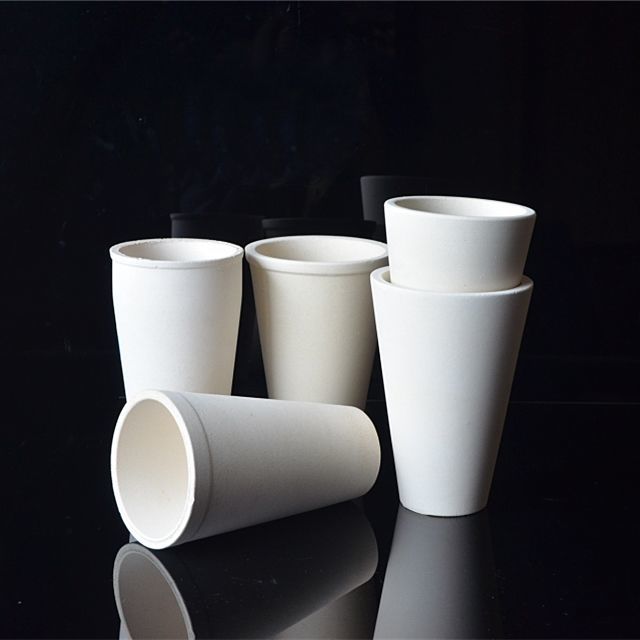
NEWS
XING TAL LONG
Recommended Products
High Temperature Resistant Customized Components: Essential Innovations in Ceramic Building Materials
Time:
2025-04-26 11:41
Source:
In the construction and decorative materials sector, particularly in the realm of brick and ceramic products, the demand for high temperature resistant customized components has grown significantly. These components are crucial for applications where thermal resilience is paramount, such as in kilns, furnaces, and high-heat environments. Understanding their characteristics and applications can greatly benefit professionals in the industry.
High temperature resistant components are engineered to withstand extreme heat conditions, often surpassing temperatures of 1000°C (1832°F). This thermal stability is essential for maintaining structural integrity and performance, especially in environments where conventional materials would fail. The customization aspect allows manufacturers to tailor these components to specific project requirements, whether that involves unique shapes, sizes, or thermal properties.
One of the primary materials used for these high temperature resistant components is advanced ceramics. Ceramics offer excellent thermal insulation, mechanical strength, and resistance to thermal shock, making them ideal for applications in construction. The ability to customize these components means that architects and builders can design spaces that are not only aesthetically pleasing but also functional in high-temperature settings.
The applications of high temperature resistant customized components extend beyond mere structural support. They play a vital role in decorative elements that must endure significant heat, such as fireplace surrounds or oven finishes. By integrating these components, designers can create stunning visuals without compromising safety or durability.
Additionally, the use of high temperature resistant materials leads to improved energy efficiency in buildings. These components can help maintain stable internal temperatures, reducing the need for excessive heating or cooling. This aspect is particularly appealing in modern architecture, where sustainability and energy conservation are increasingly prioritized.
Moreover, with ongoing advancements in material science, professionals in the ceramic building materials industry have access to a wider range of options for customization. Innovations in production techniques allow for intricate designs and enhanced performance characteristics, making it easier to meet the specific needs of different construction projects.
In conclusion, high temperature resistant customized components represent a vital advancement in the building materials industry, especially in the realm of ceramics. Their unique properties not only ensure safety and durability in high-heat environments but also enable creative freedom in architectural design. For professionals in the field, understanding the benefits and applications of these components can lead to improved project outcomes and greater overall efficiency. Embracing these innovations is essential for staying at the forefront of modern building practices.
High temperature resistant components are engineered to withstand extreme heat conditions, often surpassing temperatures of 1000°C (1832°F). This thermal stability is essential for maintaining structural integrity and performance, especially in environments where conventional materials would fail. The customization aspect allows manufacturers to tailor these components to specific project requirements, whether that involves unique shapes, sizes, or thermal properties.
One of the primary materials used for these high temperature resistant components is advanced ceramics. Ceramics offer excellent thermal insulation, mechanical strength, and resistance to thermal shock, making them ideal for applications in construction. The ability to customize these components means that architects and builders can design spaces that are not only aesthetically pleasing but also functional in high-temperature settings.
The applications of high temperature resistant customized components extend beyond mere structural support. They play a vital role in decorative elements that must endure significant heat, such as fireplace surrounds or oven finishes. By integrating these components, designers can create stunning visuals without compromising safety or durability.
Additionally, the use of high temperature resistant materials leads to improved energy efficiency in buildings. These components can help maintain stable internal temperatures, reducing the need for excessive heating or cooling. This aspect is particularly appealing in modern architecture, where sustainability and energy conservation are increasingly prioritized.
Moreover, with ongoing advancements in material science, professionals in the ceramic building materials industry have access to a wider range of options for customization. Innovations in production techniques allow for intricate designs and enhanced performance characteristics, making it easier to meet the specific needs of different construction projects.
In conclusion, high temperature resistant customized components represent a vital advancement in the building materials industry, especially in the realm of ceramics. Their unique properties not only ensure safety and durability in high-heat environments but also enable creative freedom in architectural design. For professionals in the field, understanding the benefits and applications of these components can lead to improved project outcomes and greater overall efficiency. Embracing these innovations is essential for staying at the forefront of modern building practices.
High Temperature Resistant Customized component
2025-03-26
2025-01-26

